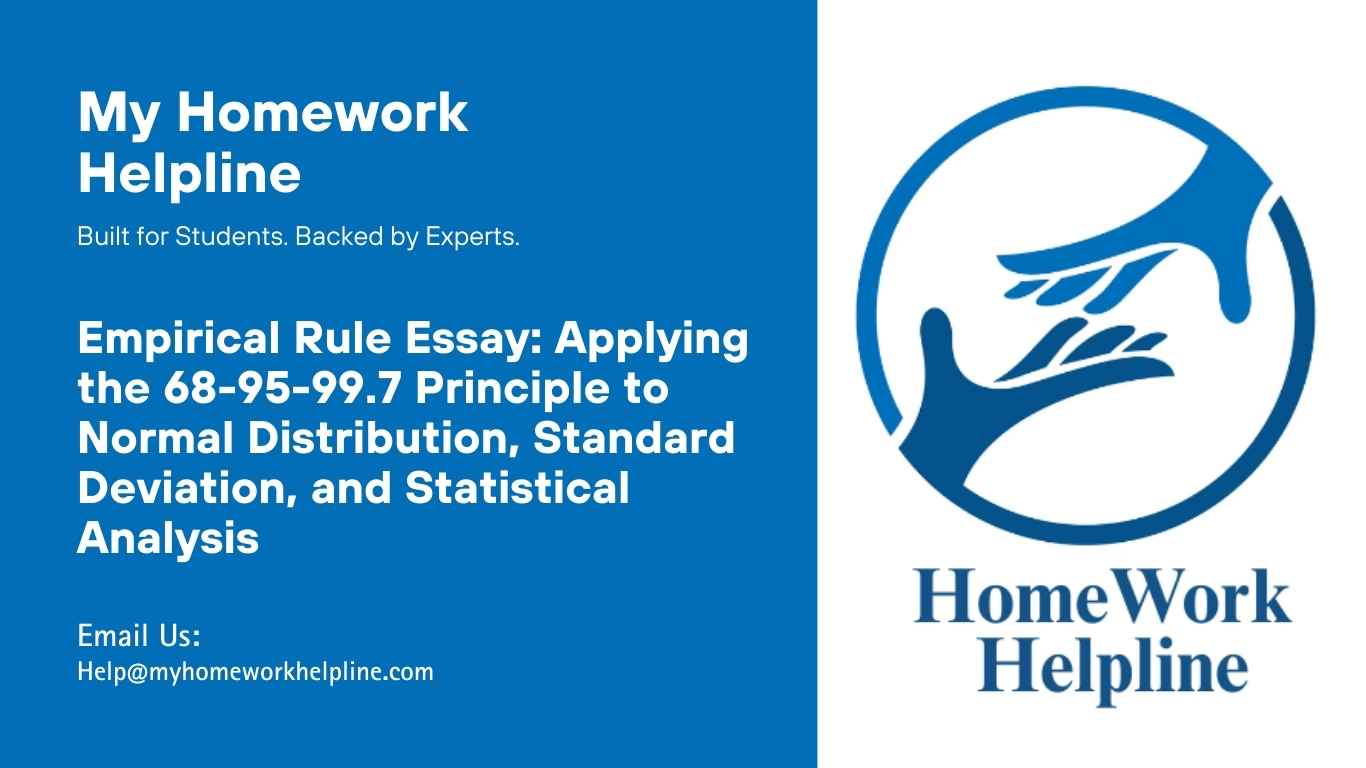Empirical Rule Essay: Understanding the 68-95-99.7 Distribution Principle
The empirical rule, also known as the three-sigma rule or the 68-95-97.7 rule, is a statistical principle used to remember the percentage of values we win an interval estimate in normal distribution data: 68% of data lies within one standard deviation of the mean, 95% within two standard deviations, and 97.7% within three standard deviations (Frost, n.d). Normal or gaussian distributions are characterized by a symmetric bell-shaped curve, mean, and standard deviation, with the median, mean, and mode being the same (Ferrare, n.d). Knowing the standard deviation and mean can enable one to calculate the probabilities and percentages for various outcomes with a given data set. This rule shows in statistical control charts that there is an upper and lower limit of +/-3 standard deviations, which is an easy way to identify outliers.
Struggling with statistics assignments that involve the empirical rule or normal distribution? Our expert team helps simplify essays and projects by breaking down complex topics like mean, standard deviation, and probability ranges. With step-by-step guidance, you’ll gain confidence in analyzing data and presenting accurate results. Discover how our homework assistance in business studies can support your academic success today.
An example of normally distributed data adhering to the empirical rule is the distribution of scores on a standardized test. If a standardized test has a mean score of 500 and a standard deviation of 100, applying the three-sigma rule, we can estimate that approximately 68% of the students scored between 400 and 600 marks, 95% of students scored between 300 and 700, and approximately 99.7% of the students scored between 200 and 800. This data means that 95% of the class will score between 300 and 700 marks; therefore, 5% will score outside this range, that is, 2.5% will score less than 200 and 2.5% more than 800. With this data, we can compare the sample mean to a known population using a single sample z-test for means or compare the sample mean to an unknown population using a single sample t-test (Wooditch et al., 2021).
References
Ferrare, J. J. (n.d.). Normal distributions [PDF document]. University of Washington Bothell. https://pdfs.semanticscholar.org/76d2/ad31842243679e19a185fa65a4a334235bb9.pdf
Frost, J. (n.d.). Empirical rule: Definition & formula. Statistics by Jim. https://statisticsbyjim.com/probability/empirical-rule
Wooditch, A., Johnson, N. J., Solymosi, R., Ariza, J. M., & Langton, S. (2021). The normal distribution and single-sample significance tests. In A beginner’s guide to statistics for criminology and criminal justice using R (pp. 155-168). Springer Nature.

